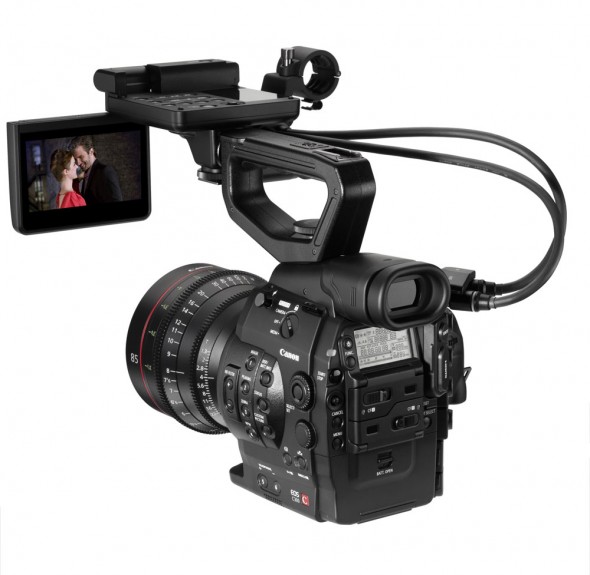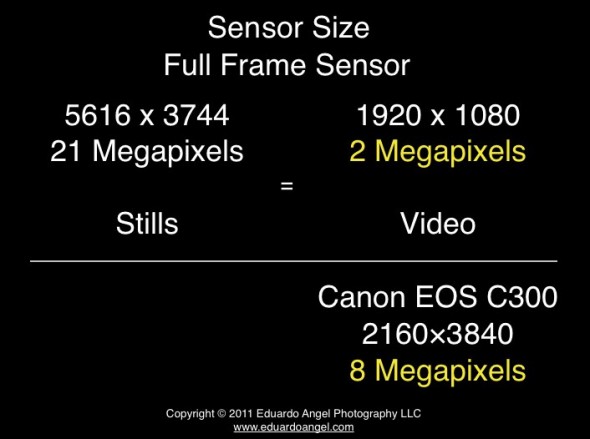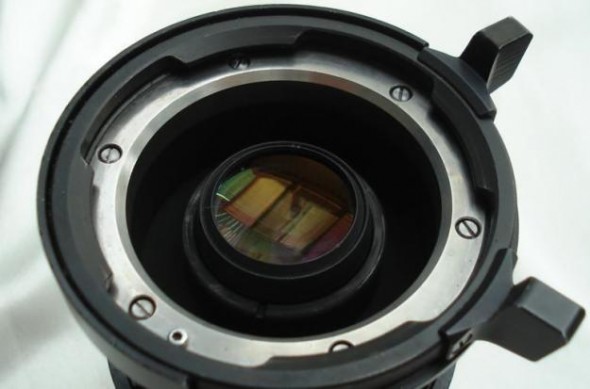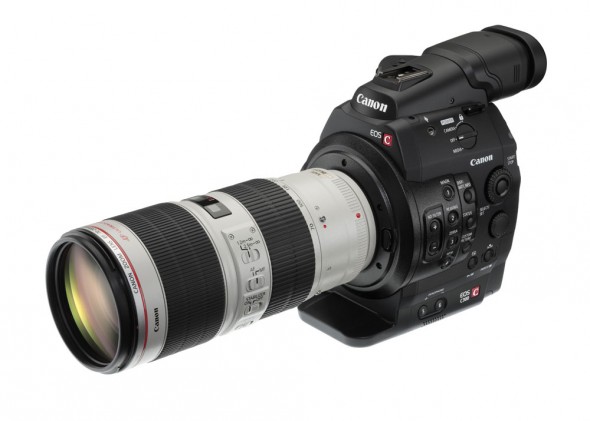Video
Canon EOS C300 explained for photographers.
For starters, the C300 is NOT “just bigger than the EOS 5D Mark III.” Well, it IS bigger, but it is also a completely different system. The Canon EOS C300 comes in two flavors, one with EF mount (EOS C300) which takes your good ol’ Canon lenses, and another one (C300 PL) with a PL mount.
The camera is compact box, similar in size to a Mamiya RZ with a viewfinder. It is a bit heavy, but very comfortable to use for extended periods of time.
The EOS C300 has an 8.3 MP (2160 × 3840) Super 35 CMOS sensor with a Digic DV III processor. Keep in mind that although it’s a 4K sensor, the images will all be recorded in either 1080 or 720. Many photographers think that 8 megapixels is nothing, so it is time to burst some bubbles; the 5D Mark II captures 21 megapixels when shooting stills. When doing video you are shooting only 2 megapixels, but at 24, 30, or even 60 frames per second. That’s a LOT of data. Check this out:
Keeping this in perspective, 8 megapixels is actually a lot!
The C300 delivers some cool and highly requested features like dual CF card slots, timecode (yes!), HDMI and HDSDI out (SDI at 4:2:2), XLR audio, an included LCD monitor, built in ND, and the usual accessories. Exposure and focus control are completely manual, and custom presets as well as other camera menus are similar to other Canon XF models. That 50mb 4:2:2, even in 8 bit, is broadcast standard, and will be accepted for any broadcaster without the need of an external recorder like the AJA Ki Pro Mini or the PIX240.
The C300 uses the MXF file format, which is fully supported on Adobe Premiere Pro CS5.5. Awesome! According to this link, it seems that it is not supported on Final Cut X.
Three prime lenses (24mm, 50mm and 85mm), and two zooms (14.5-60mm T2.6 and 30-300mm T2.95-3.7) are part of the C300 arsenal.
I hope this post helps clarify some of the tech specs of the C300 system, and keep our expectations in check. In price (under $15,000) and specifications the C300 competes directly against Sony’s PMW-F3L. This is not a replacement for a 5D Mark III, it is an entirely different and highly specialized system.
More info directly more Canon here, including “Understanding the EOS C300’s Canon Log Gamma” article by Jem Schofield.



